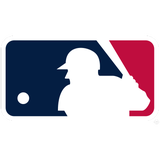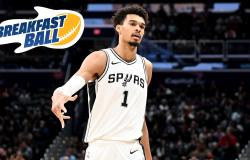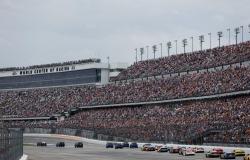
At Yankees camp on Wednesday, Luis Gil threw a pitch to Aaron Judge that tailed just below the zone. Gil disagreed. Believing it caught the bottom of the plate, he put his hand to his cap. The players gazed up toward the video board, which revealed that the pitch did indeed miss by 1.8 inches. Less than 30 seconds later, the at-bat continued.
This was the automated ball-strike challenge system at play.
While NFL fans dream of the day an electronic system that can more accurately determine first downs, MLB is in the process of figuring out its own way to attempt to remove human error on balls and strikes. Robot umpires haven't arrived at Major League Baseball yet, but a version of an automated strike zone will be tested this spring.
Starting Thursday at Camelback Ranch, where the Dodgers and Cubs will open Cactus League play, the ABS challenge system will begin being implemented. The system will be in place at 13 stadiums and in more than 60% of spring training games across Arizona and Florida. The setup represents a compromise between humans and full ABS, allowing umpires to decide the majority of balls and strikes while affording players the ability to fix the more egregious calls.
ADVERTISEMENT
"We've heard good things about it, heard bad things about it," Diamondbacks ace Corbin Burnes said Thursday. "At the big-league level, we want to see how things work and get a good few weeks in to see if it's something that will be feasible in the future, but we'll see how it goes. It's still technology, so it's still going to have its bugs that they're going to have to figure out."
This spring, teams will get two challenges per game and will only lose a challenge if it is unsuccessful. Only a batter, pitcher or catcher can challenge a call, which they will indicate by tapping their head. They have to do so immediately after the pitch without assistance from the manager or players in the dugout. The Hawk-Eye tracking technology will then be displayed on the videoboard, showing whether the pitch was a strike or not. On average, challenges at the Triple-A level have taken 17 seconds to complete.
The dimensions of the strike zone will be determined by the batter's height — the top of the zone is 53.5% of the player's height, while the bottom of the zone is at 27%. The heights of all position players in camp have been measured this spring.
The reason it's not at every spring stadium is because they're not all equipped for the technology. In the Cactus League, the ABS challenge system will be utilized at the five dual-team stadiums — Camelback Ranch (Dodgers/White Sox), Surprise Stadium (Rangers/Royals), Peoria Sports Complex (Mariners/Padres), Goodyear Ballpark (Reds/Guardians) and Salt River Fields (Diamondbacks/Rockies). In the Grapefruit League, it will be at George M. Steinbrenner Field (Yankees), Clover Park (Mets), BayCare Ballpark (Phillies), TD Ballpark (Blue Jays), LECOM Park (Pirates), Publix Field (Tigers), Hammond Stadium (Twins) and Roger Dean Chevrolet Stadium (Marlins/Cardinals).
The system won't go into effect during the 2025 MLB season, but if deemed successful during Cactus and Grapefruit League play could be implemented as soon as 2026. The challenge system will occur at the Triple-A level this year.
MLB has already experimented with different versions of ABS in the minor leagues, but this spring is the first time it will be tested at the big-league level. Big-leaguers on rehab assignments, however, have already gotten a taste of a version of ABS. The Guardians' Steven Kwan, who made a rehab start and experienced full ABS, is among them.
At the All-Star Game last year, Kwan said he thought the concept was a good idea but wondered about the psychology of a player's willingness to burn a challenge on a close call.
"I'm not sure how I'm going to adapt to that part," Kwan said. "In a vacuum, it sounds like it's going to be effective, but we'll see."
Dave Roberts, who will be managing the first spring game with ABS technology, has not yet decided if he's a fan. He told his hitters to be careful of challenging breaking balls low in the zone, believing those are often strikes when hitters believe otherwise. He also smiled, relaying what he told one of his hitters in particular before Thursday's Cactus League opener.
"I told [Max] Muncy not to challenge," Roberts said. "He's our biggest culprit of not agreeing with the strike zone, so I said save your challenges."
Pitchers, often, are the most skeptical about the technology, which has been tested at Triple-A the last two years. That includes Burnes, who is accustomed to studying the historical strike zone of the umpire behind the plate before each start.
"They're pretty good about sticking to their zones historically," Burnes said. "They make mistakes at home plate, but if you look at kind of the general strike zone of an umpire over the course of a 10-year career in the big leagues, those guys are pretty good."
For Triple-A players who were exposed to both full ABS and the challenge system, the latter seems to be the prevailing preference.
"It's currently a little inconsistent," Dodgers pitcher Landon Knack said. "Ballpark to ballpark, it would not be calibrated the same. So, you'd go some places and it'd be higher or lower. You go to some places, and it's actually moved over an inch or two."
Knack also said in his experience, the zone tended to be smaller than the one he's been accustomed to growing up, often taking away calls he'd normally get at the top of the zone. As a pitcher whose fastball lives in the mid-to-low 90s, command and precision are especially vital. A couple calls that go against him on the edges can make or break a start.
He referenced his walk rate at Triple-A since the system began being utilized. In 2023, Knack walked twice as many batters per nine innings than he did in Double-A that same season. Last year, he walked a career-high 4.1 batters per nine innings in Triple-A but only 2.3 in 15 big-league games.
Knack, however, understands the interest in the technology and the desire to get as many calls correct as possible. He believes it's engaging for fans and could eventually be a positive for the game once the kinks are worked out, even if it's not quite there yet.
"It's close," Knack said. "It's not like it's super far off where it needs to be, but it's still a little bit away."
Rowan Kavner is an MLB writer for FOX Sports. He previously covered the L.A. Dodgers, LA Clippers and Dallas Cowboys. An LSU grad, Rowan was born in California, grew up in Texas, then moved back to the West Coast in 2014. Follow him on Twitter at @RowanKavner.
Want great stories delivered right to your inbox? Create or log in to your FOX Sports account, follow leagues, teams and players to receive a personalized newsletter daily.
recommended





